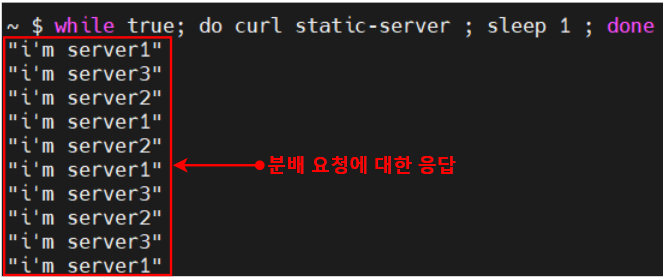일반적으로 Consul은 서비스 간 통신할 때 아래와 같이 동작한다.

위 방식은 사용 가능한 모든 서비스에 트래픽을 분산시킬 수 있기 때문에 대부분의 환경에서는 문제가 되지 않는다.
그러나 어떤 상황에서는 서비스 간 호출 대기 시간을 줄이거나, 가용 영역 간 데이터 전송 비용을 줄이기 위해 트래픽이 동일한 가용 영역 내에 유지되도록 하고 싶을 수 있다.
이 문제를 해결하기 위해 Consul 1.17 버전에서는 locality-aware routing에 대한 기능을 도입했다.
locality-aware routing 기능을 적용하면 아래와 같이 동작하게 된다.

서비스 호출 시 트래픽을 같은 영역 내에 유지함으로써 서비스 간 대시 시간을 줄여 서비스 성능을 향상하고, 트래픽 비용을 절감할 수 있다.
같은 영역 내 서비스에서 장애가 발생할 경우 아래와 같이 Service Mesh는 자동으로 인접 영역의 정상 서비스로 장애조치 되어 데이터 센터 내 가용성을 보장한다.

본 글에서는 위 시나리오 기반 구성하는 실습을 다룬다.
참고
해당 기능은 Consul Enterprise에서 사용할 수 있다.
구성 환경
- Amazon EKS 클러스터 v1.27.7
- Consul v1.17-ent
- Consul Enterprise license
- Consul Helm Chart 버전 1.3.1
- Helm Cli v3.8.2
1. Consul 구성
Consul Helm repo를 등록한다.
$ helm repo add hashicorp https://helm.releases.hashicorp.com
$ helm repo update
Consul 라이센스를 적용한다.
# license.yaml
apiVersion: v1
data:
key: {license key base64 incoding}
kind: Secret
metadata:
name: license
namespace: consul
위 라이센스 파일을 적용한다.
$ kubectl apply -f license.yaml
Consul의 Helm Chart values 파일을 작성한다.
# consul-values.yaml
global:
datacenter: dc2
peering:
enabled: true
enterpriseLicense:
secretName: license
secretKey: key
adminPartitions:
enabled: true
name: "default"
enableConsulNamespaces: true
image: hashicorp/consul-enterprise:1.17.1-ent
metrics:
enabled: true
enableAgentMetrics: true
agentMetricsRetentionTime: '1m'
tls:
httpsOnly: false
enabled: true
enableAutoEncrypt: true
verify: false
acls:
manageSystemACLs: true
gossipEncryption:
autoGenerate: true
server:
replicas: 1
exposeGossipAndRPCPorts: true
dns:
enableRedirection: true
enabled: true
connectInject:
enabled: true
consulNamespaces:
mirroringK8S: true
controller:
enabled: true
ingressGateways:
enabled: true
defaults:
replicas: 1
terminatingGateways:
enabled: true
defaults:
replicas: 1
meshGateway:
enabled: true
replicas: 1
위에서 작성한 "consul-values.yaml" 파일로 Consul을 설치한다.
$ helm upgrade -i -n consul consul -f consul-values.yaml hashicorp/consul --version 1.3.1 --create-namespace
proxydefaults 파일을 작성한다.
# proxydefaults.yaml
apiVersion: consul.hashicorp.com/v1alpha1
kind: ProxyDefaults
metadata:
name: global
spec:
meshGateway:
mode: local
proxydefaults를 적용한다.
$ kubectl apply -f proxydefaults.yaml
static-client 서비스를 배포를 위해 yaml파일을 작성한다.
# static-client.yaml
apiVersion: consul.hashicorp.com/v1alpha1
kind: ServiceDefaults
metadata:
name: static-client
spec:
protocol: 'http'
---
apiVersion: v1
kind: Service
metadata:
name: static-client
spec:
selector:
app: static-client
ports:
- port: 80
---
apiVersion: v1
kind: ServiceAccount
metadata:
name: static-client
---
apiVersion: apps/v1
kind: Deployment
metadata:
name: static-client
spec:
replicas: 1
selector:
matchLabels:
app: static-client
template:
metadata:
name: static-client
labels:
app: static-client
annotations:
'consul.hashicorp.com/connect-inject': 'true'
spec:
containers:
- name: static-client
image: curlimages/curl:latest
command: ['/bin/sh', '-c', '--']
args: ['while true; do sleep 30; done;']
serviceAccountName: static-client
static-client 서비스를 배포한다.
$ kubectl apply -f static-client.yaml
배포된 static-client Pod가 배포된 노드를 확인한다.
$ kubectl get po static-client-7bbffb9f6d-lt6f4 -o wide
NAME READY STATUS RESTARTS AGE IP NODE NOMINATED NODE READINESS GATES
static-client-7bbffb9f6d-lt6f4 2/2 Running 0 3h6m 10.10.2.64 ip-10-10-2-16.ap-northeast-2.compute.internal <none> <none>
AWS의 각 노드의 zone을 확인한다.
- 해당 글에서 static-client 서비스는 "ap-northeast-2b"에 위치해 있다.
$ kubectl get nodes -o jsonpath='{range .items[*]}[node name] {.metadata.name}{"\t"} [region] {.metadata.labels.topology\.kubernetes\.io/region}{"\t"} [zone] {.metadata.labels.topology\.kubernetes\.io/zone}{"\n"}{end}'
[node name] ip-10-10-1-121.ap-northeast-2.compute.internal [region] ap-northeast-2 [zone] ap-northeast-2a
[node name] ip-10-10-2-16.ap-northeast-2.compute.internal [region] ap-northeast-2 [zone] ap-northeast-2b
[node name] ip-10-10-3-89.ap-northeast-2.compute.internal [region] ap-northeast-2 [zone] ap-northeast-2c
각 노드에 Pod를 분산하여 배포하기 위해 아래와 같이 static-server를 배포한다.
# static-server.yaml
apiVersion: consul.hashicorp.com/v1alpha1
kind: ServiceDefaults
metadata:
name: static-server
spec:
protocol: 'http'
---
apiVersion: v1
kind: Service
metadata:
name: static-server
spec:
selector:
app: static-server
ports:
- protocol: TCP
port: 8080
targetPort: 8080
---
apiVersion: v1
kind: ServiceAccount
metadata:
name: static-server
---
apiVersion: v1
kind: Pod
metadata:
name: static-server1
labels:
app: static-server
annotations:
consul.hashicorp.com/connect-inject: "true"
spec:
containers:
- name: static-server
image: hashicorp/http-echo:latest
args:
- -text="i'm server1"
- -listen=:8080
ports:
- containerPort: 8080
name: http
serviceAccountName: static-server
nodeName: ip-10-10-3-89.ap-northeast-2.compute.internal
---
apiVersion: v1
kind: Pod
metadata:
name: static-server2
labels:
app: static-server
annotations:
consul.hashicorp.com/connect-inject: "true"
spec:
containers:
- name: static-server
image: hashicorp/http-echo:latest
args:
- -text="i'm server2"
- -listen=:8080
ports:
- containerPort: 8080
name: http
serviceAccountName: static-server
nodeName: ip-10-10-2-16.ap-northeast-2.compute.internal
---
apiVersion: v1
kind: Pod
metadata:
name: static-server3
labels:
app: static-server
annotations:
consul.hashicorp.com/connect-inject: "true"
spec:
containers:
- name: static-server
image: hashicorp/http-echo:latest
args:
- -text="i'm server3"
- -listen=:8080
ports:
- containerPort: 8080
name: http
serviceAccountName: static-server
nodeName: ip-10-10-1-121.ap-northeast-2.compute.internal
- static-client Pod와 같은 위치에 있는 Pod는 static-server2이다.
$ kubectl get po -o wide static-server1 static-server2 static-server3
NAME READY STATUS RESTARTS AGE IP NODE NOMINATED NODE READINESS GATES
static-server1 2/2 Running 0 27s 10.10.3.228 ip-10-10-3-89.ap-northeast-2.compute.internal <none> <none>
static-server2 2/2 Running 0 27s 10.10.2.41 ip-10-10-2-16.ap-northeast-2.compute.internal <none> <none>
static-server3 2/2 Running 0 27s 10.10.1.19 ip-10-10-1-121.ap-northeast-2.compute.internal <none> <none>
서비스 간 트래픽 허용을 위해 serviceintention을 설정한다.
# intentions.yaml
apiVersion: consul.hashicorp.com/v1alpha1
kind: ServiceIntentions
metadata:
name: static-server-intention
spec:
destination:
name: static-server
sources:
- name: "*"
action: deny
- name: static-client
action: allow
static-client 서비스에 접근하여 static-server로 호출한다.
$ kubectl exec -it deploy/static-client -c static-client -- /bin/sh
아직 locality-aware routing 기능을 적용하지 않았기 때문에 static-server 서비스에 대해 분산된 응답을 받는 걸 확인할 수 있다.

2. locality-aware routing 적용 및 테스트
locality-aware routing기능 적용을 위해 아래와 같이 proxydefaults 파일을 작성한다.
# proxydefaults.yaml
apiVersion: consul.hashicorp.com/v1alpha1
kind: ProxyDefaults
metadata:
name: global
spec:
meshGateway:
mode: local
# 아래 추가
prioritizeByLocality:
mode: failover
작성한 proxydefaults 파일을 적용한다.
$ kubectl apply -f proxydefaults.yaml
static-client 서비스에 접근하여 static-server로 호출한다.
$ kubectl exec -it deploy/static-client -c static-client -- /bin/sh
같은 zone(ap-northeast-2b)에 있는 static-server2 Pod를 호출하는 걸 확인할 수 있다.

$ kubectl delete po static-server2
static-server2 Pod가 삭제된 후 static-server1, static-server3로 트래픽을 분산시키는 걸 확인할 수 있다.

'Service Mesh > Consul' 카테고리의 다른 글
| [Consul] Peering 환경에서 데이터 센터 간 Failover 구성 (0) | 2024.02.07 |
|---|---|
| [Consul] Cluster Peering을 통한 데이터 센터 간 통신 (7) | 2024.02.07 |


댓글